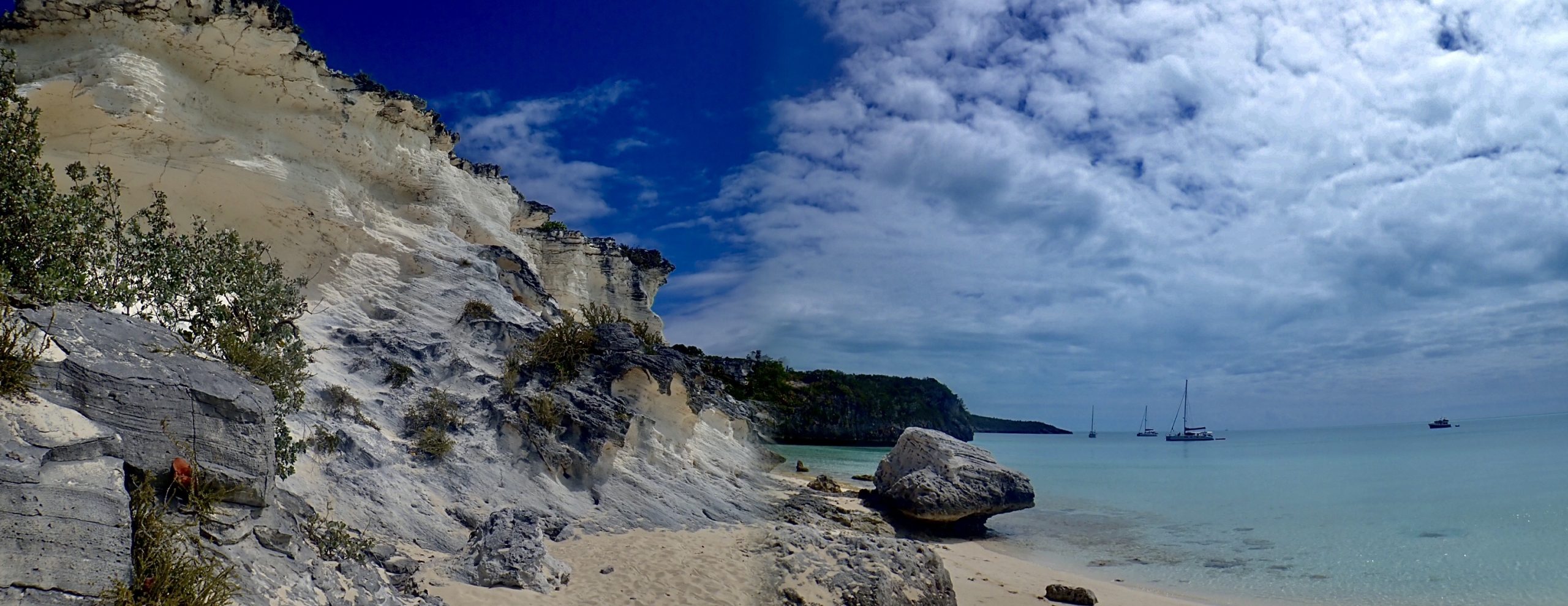
If you have to spend some time isolating yourself from the world at large, and a teeny, tiny little germ called Covid19, Bitter Iguana Cay would be very high on the list of amazing places to isolate are. It is mid-March and the beginning of the best time of the year to be in the Exuma Islands. Temperatures are 18-22 degrees Celsius at night with day time temperatures from 21-28. The sea is warming up and very comfortable for swimming, and the colours are simply … stunning.
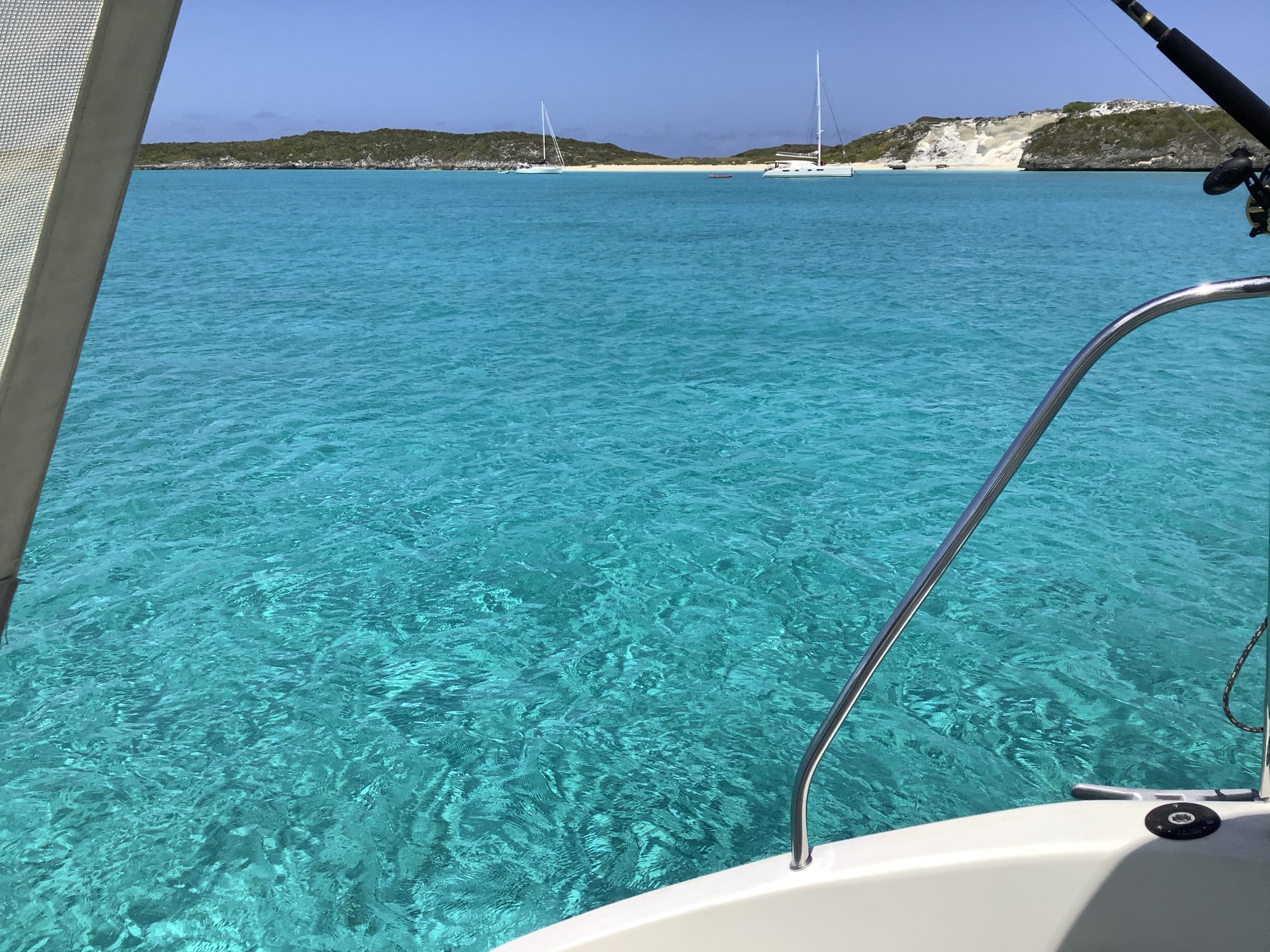
It is Sunday morning, the news all week has been filled with bad news from everywhere. It was time to escape the rest of the world and explore this incredible little piece of paradise. Like much of the Bahamas, the Exuma Cays and Islands are limestone remnants of former sand dune ridges that have resisted being totally eroded by the constant pounding of sea. However, that pounding has a benefit…incredible white sand beaches and dramatic shorelines. The pristine soft sand is perfect for strolling down, wiggling your toes into, or sitting at the shoreline as the warm clear water gently washes up your legs. The water is as clear as that found in any good swimming pool, but full of interesting marine life.
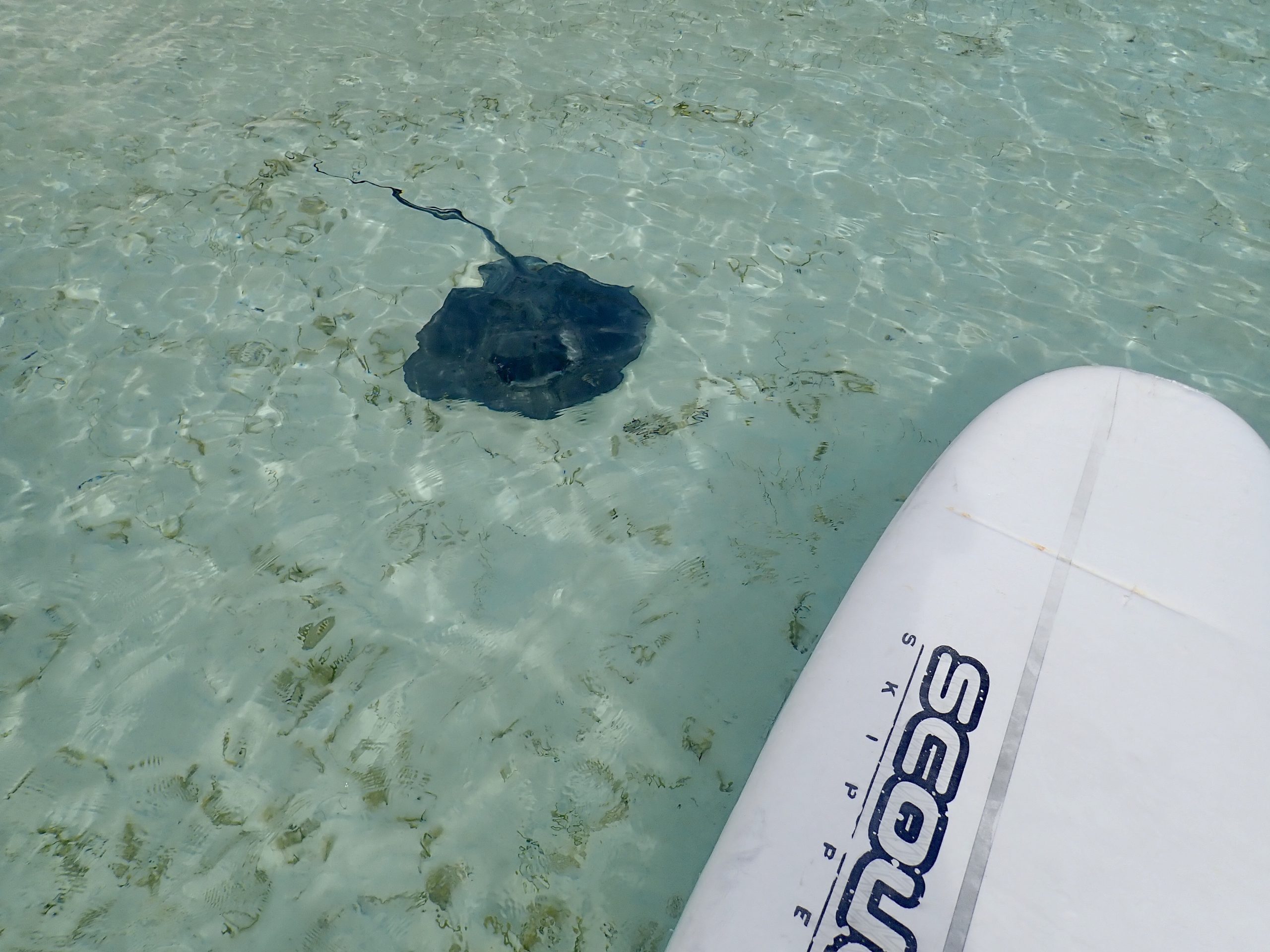
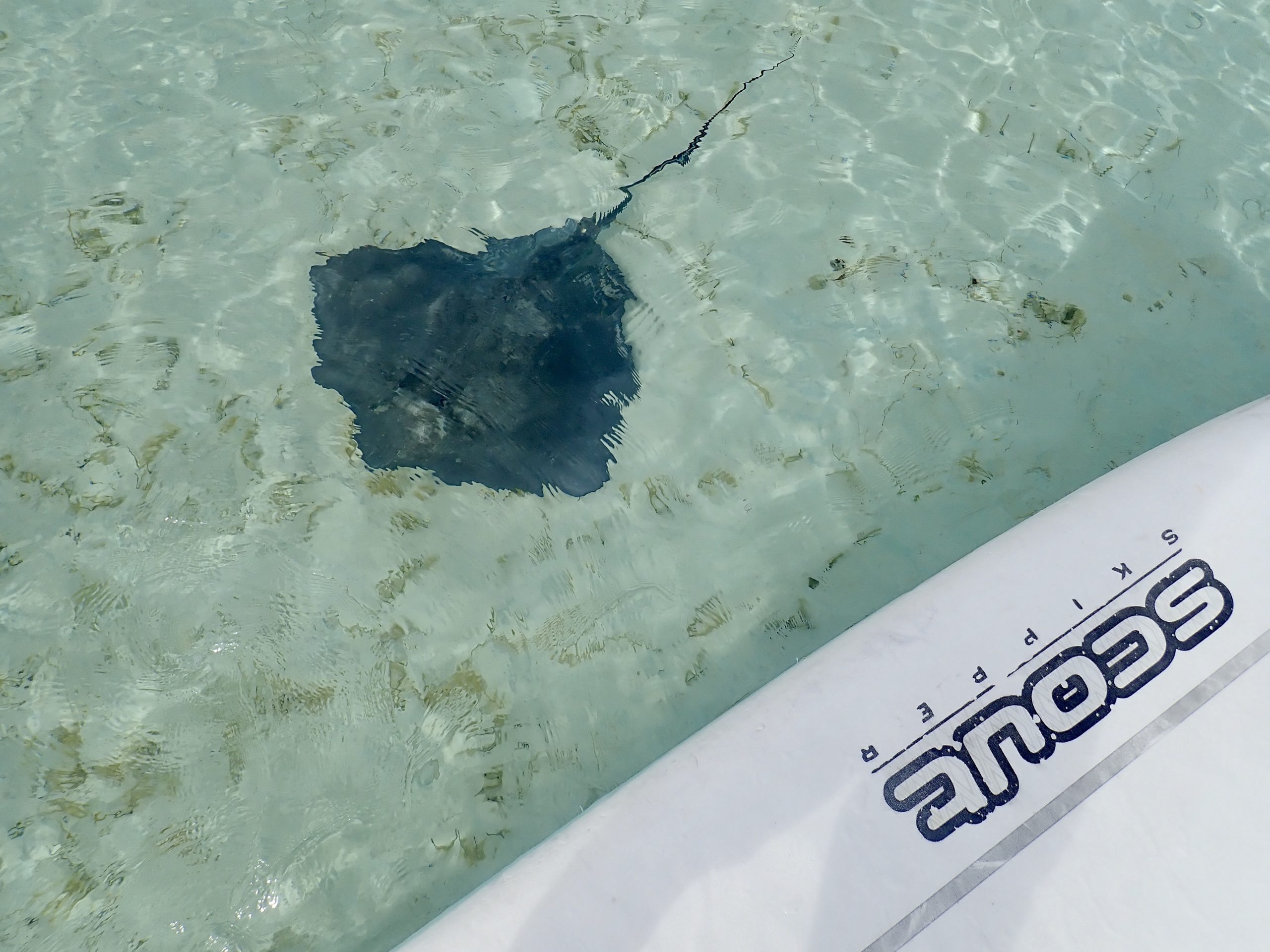
An ideal way to explore the shoreline is by paddle board. You get some exercise, a good balance workout, and even some unexpected visitors. This Stingray was just as curious about the big white flat thing above him, as the guy riding the big white flat thing was of the Stingray. The water was probably 1 meter deep, but it was so clear it looks like it was only a few centimetres. He spent sometime gliding in and out of the paddle boards shadow, before finally moving on.
As a geologist the make up of the islands I visit is always interesting. The “Art of Nature” is all around us. We just have to “see it”. Despite being dry, very rugged and mostly very difficult to walk around on, the Exuma islands are full of some of nature’s best works. As I paddled along the shore you could clearly see the fine layers of sand that were once the slip face or leeward side of the sand dunes. Long since solidified into limestone, the layers create weak surfaces in the rock. It is not uncommon to see large slabs broken off by storms that have slid into the sea. Every curve of where they fractured and broke away can be re-assembled in your mind, like looking at pieces of a giant jig saw puzzle.
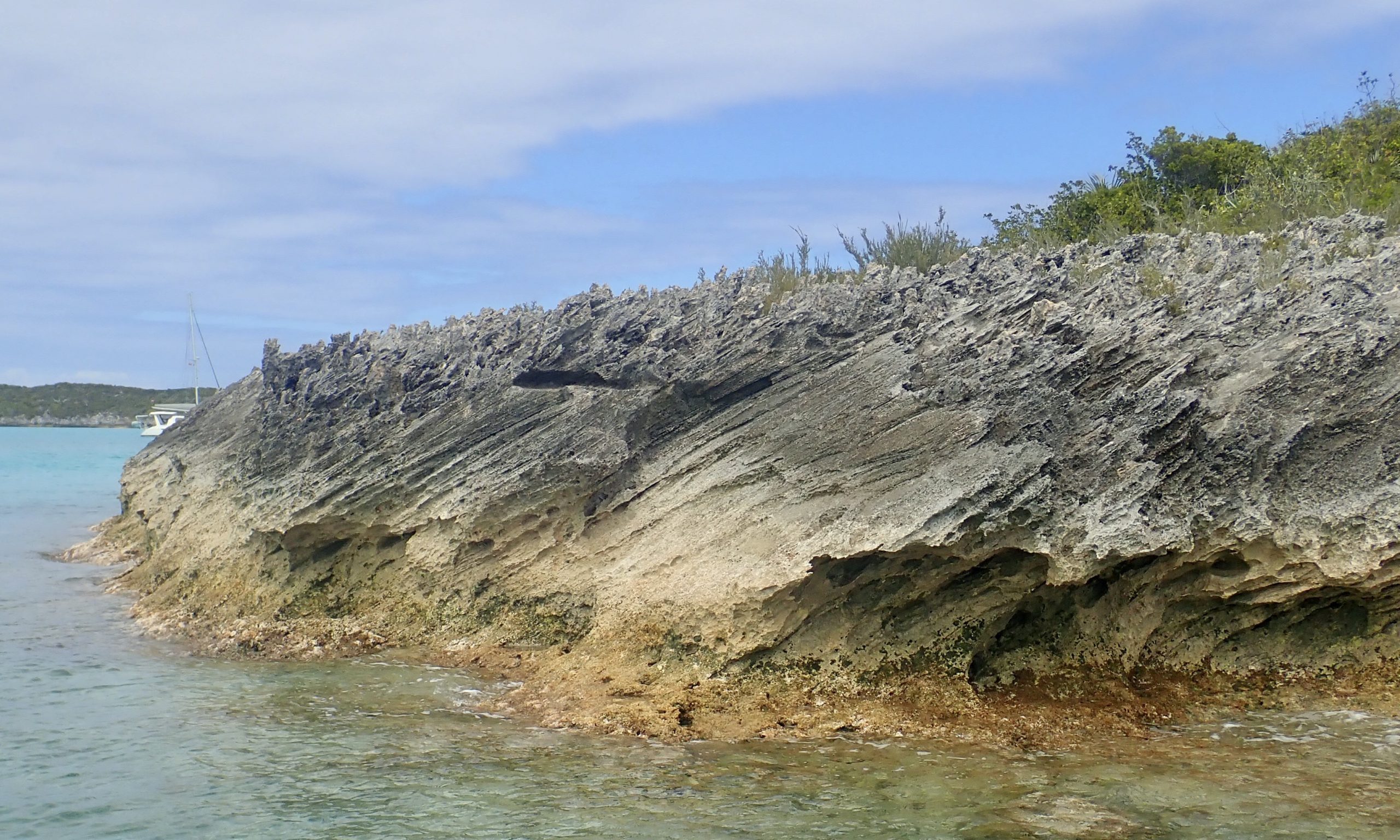

It takes powerful storms to move big pieces of heavy limestone like these. Yet relatively gentle forces, applied over a long enough period can also cause dramatic erosion as well. The constant lapping of the wind driven waves, combined with the twice daily rise and fall of the tides are eating away at these islands as well. The prevailing leeward or bank side of the islands is typically either a beautiful beach, or an undercut jagged limestone over hang or headland
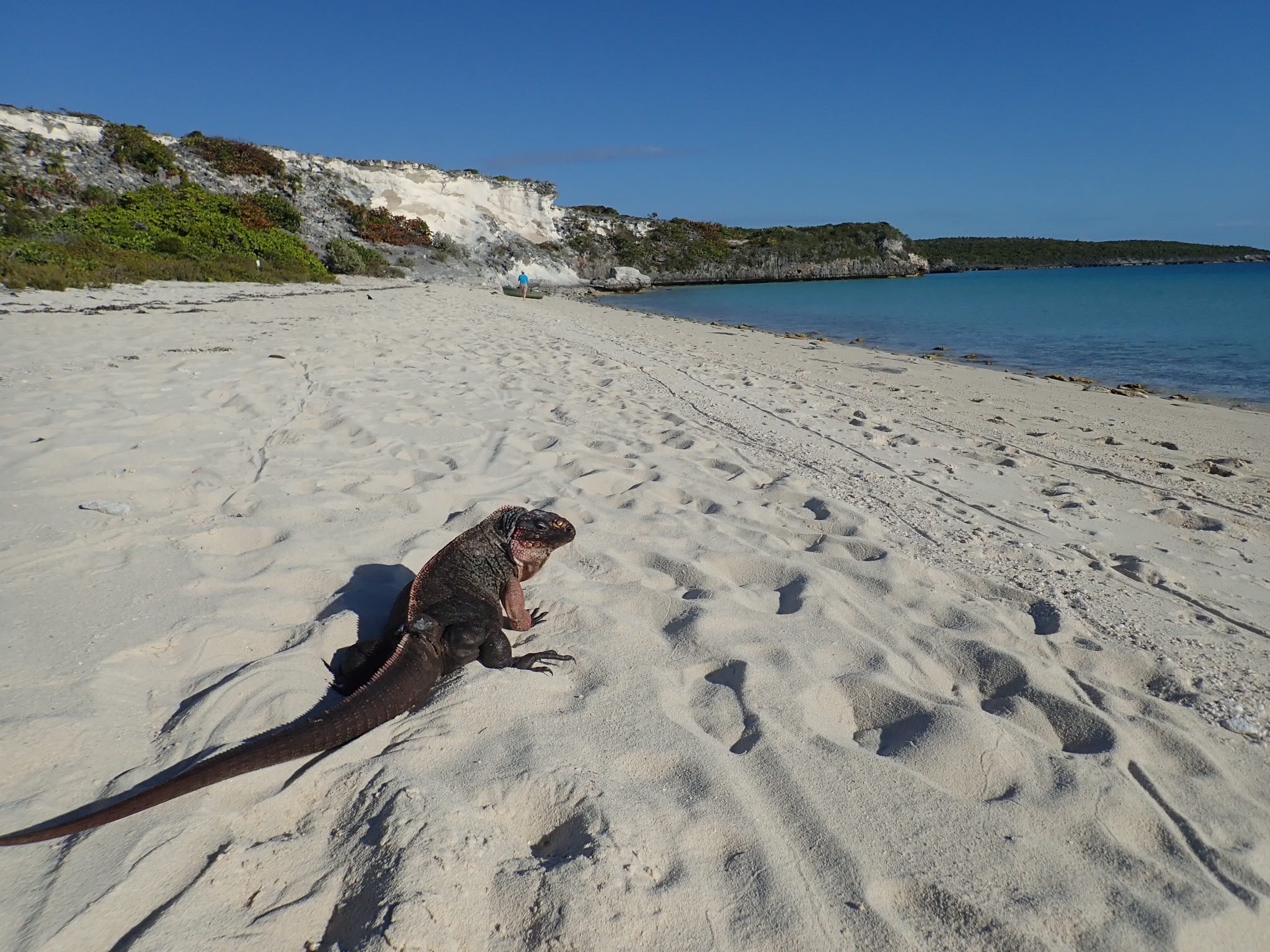

The texture of the rock along the edges of the overhangs are determined by the original make up of the sediments. What was once mostly pure sand is now eroded into a jagged karst limestone that has almost razor sharp edges and jagged spikes. Further along the shore, an area that once supported trees has a complex swarm of ancient tree and vegetation roots almost perfectly preserved. With the surround former soil or softer sand grain derived rock preferentially eroded away, the pathways of the root systems are exposed in a three dimensional haystack of interlaced rock.
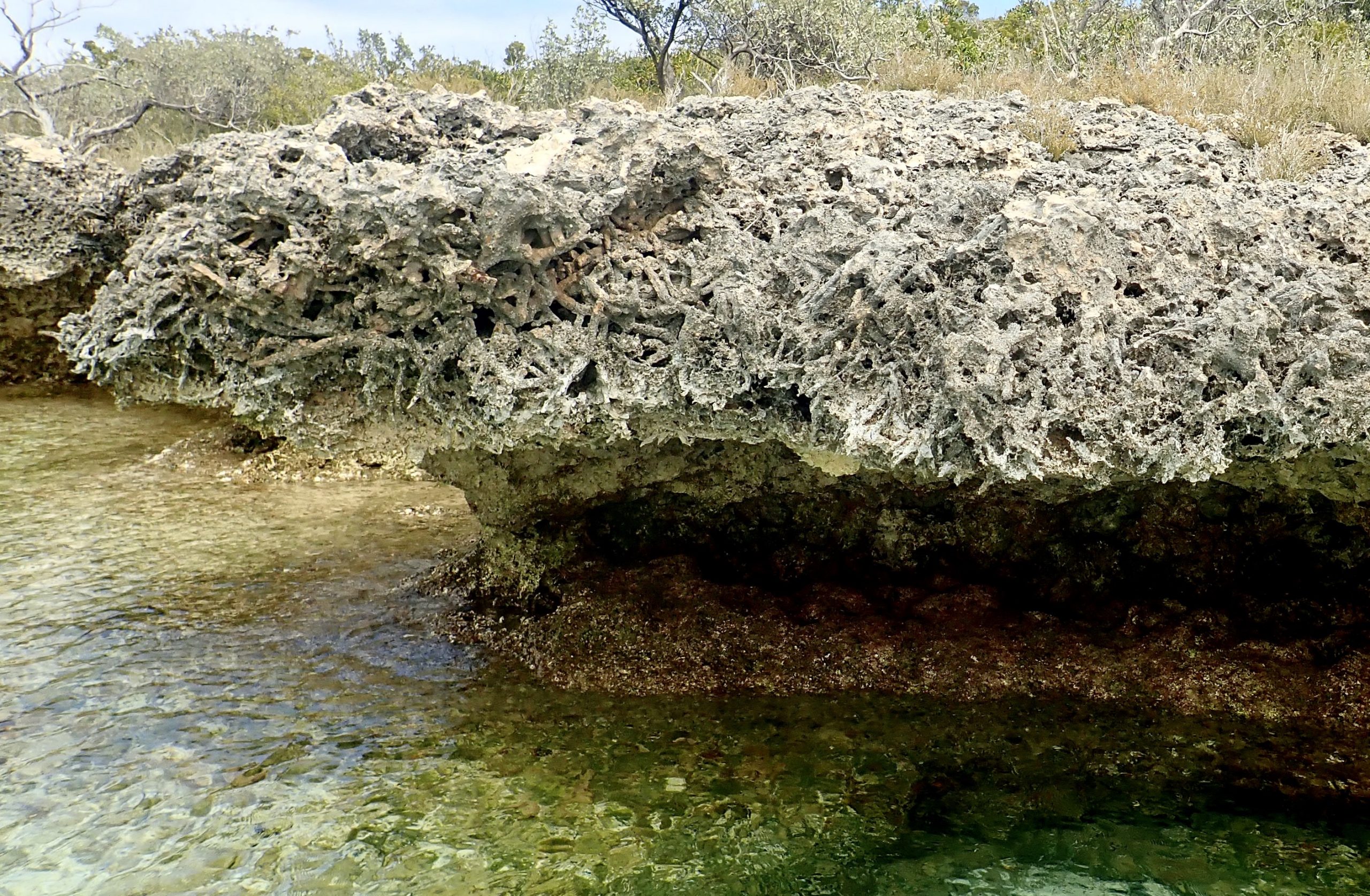
The tenacity of the vegetation on these dry and pretty inhospitable islands has always impressed me. The roots twist and curl around above ground searching for a crack or opening they can penetrate to find moisture. The shapes are fascinating. Full circles and braided roots. Textures and patterns that look like they came from the brush strokes of an artists wide brush. Nature’s Artworks, that the Group of Seven artists could have been inspired by, are there for our viewing pleasure. Life on these islands is not easy even for the vegetation.
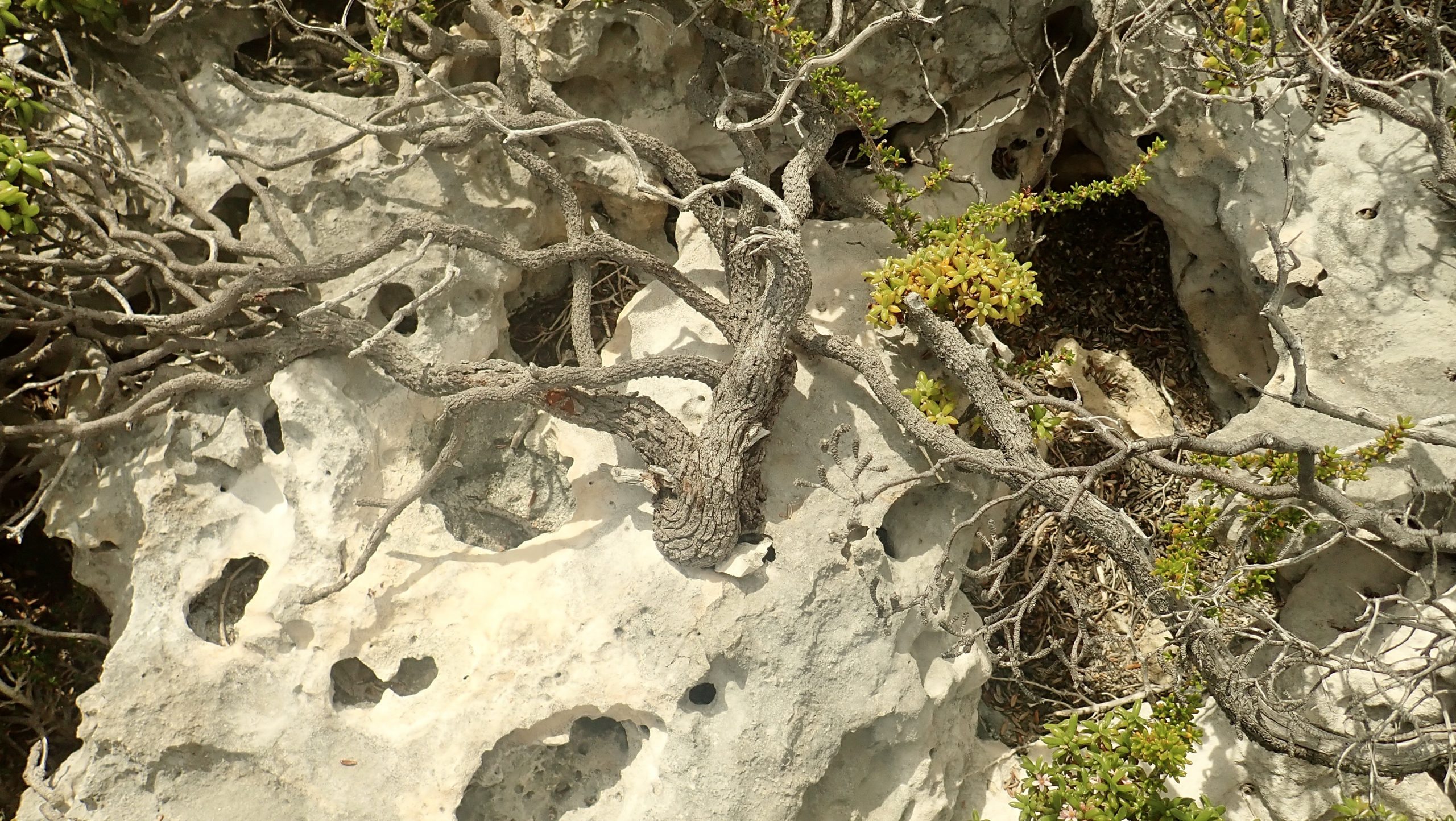
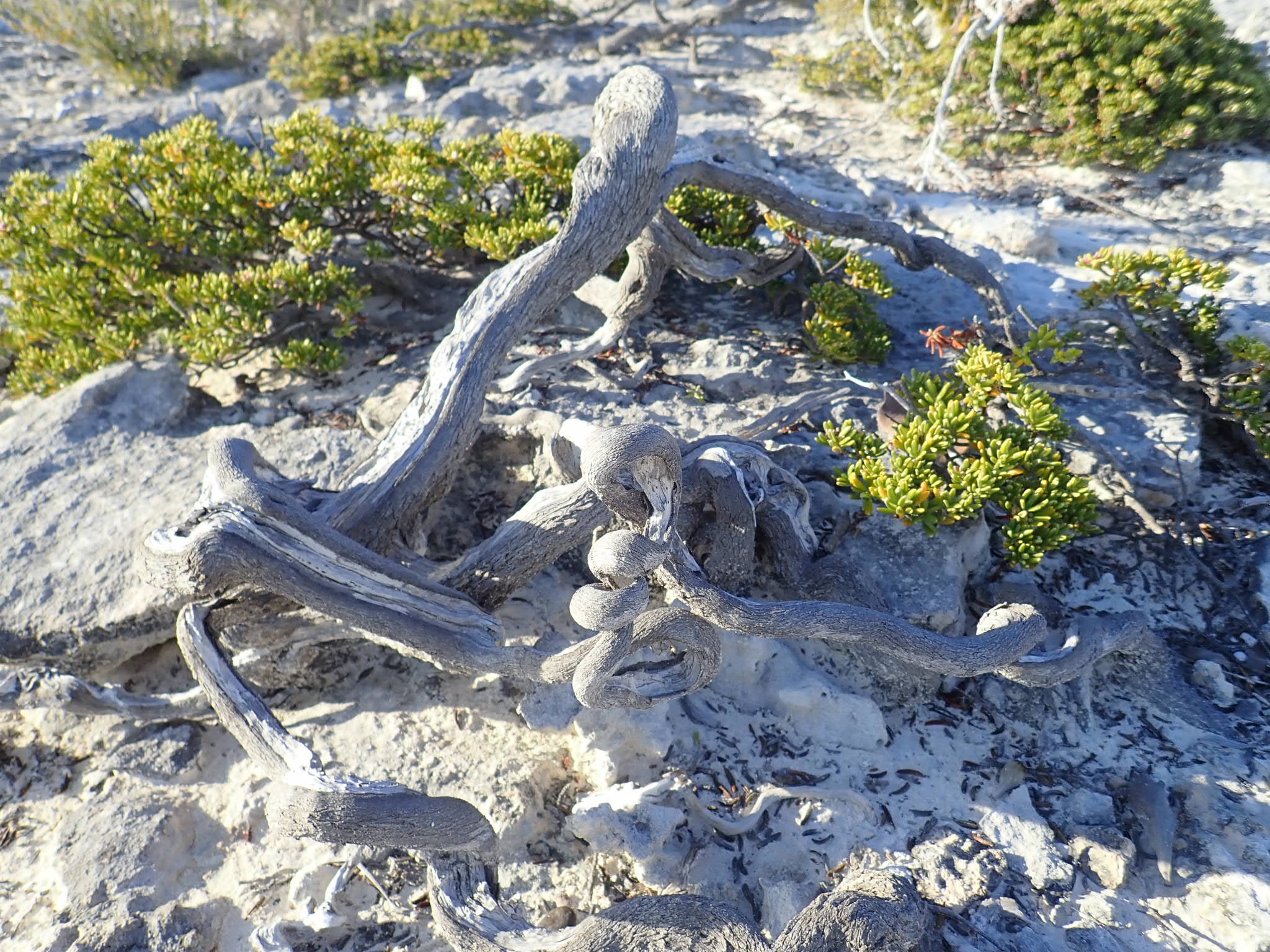
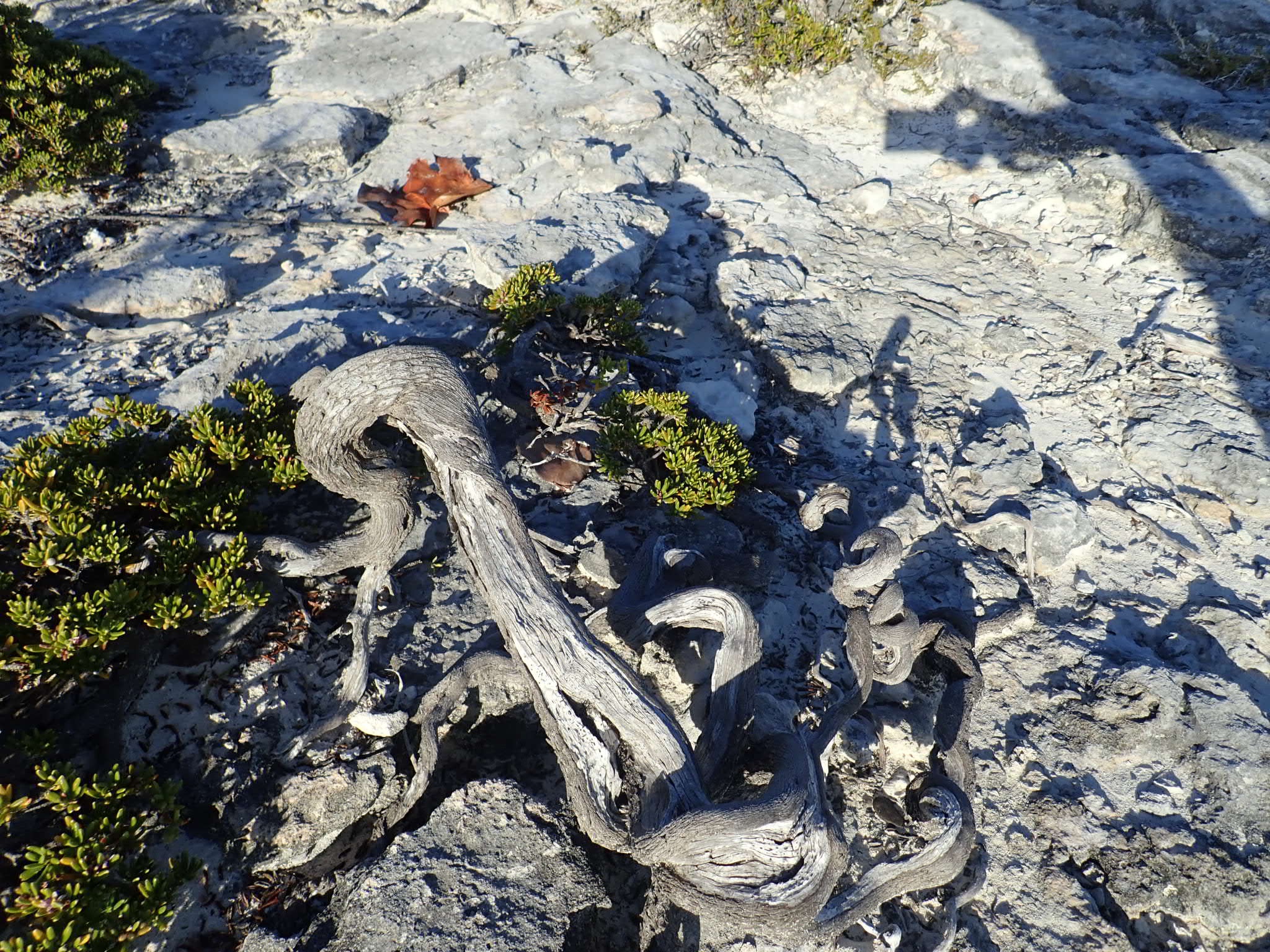
Further along the impressive white cliffs dominate the shoreline. Once a thick pile of almost pure carbonate sands, the cliffs are easily eroded and have not weathered grey like most of the limestone that is more resistant to erosion. The cliffs can easily be seen from over 7 miles away as the afternoon sun lights them up. The views from both the shore side and from above the cliffs are spectacular. They are very unique in the Exuma Islands and are one of the reasons I enjoy this unspoiled and often empty anchorage so much. It is such a pristine and unique setting.
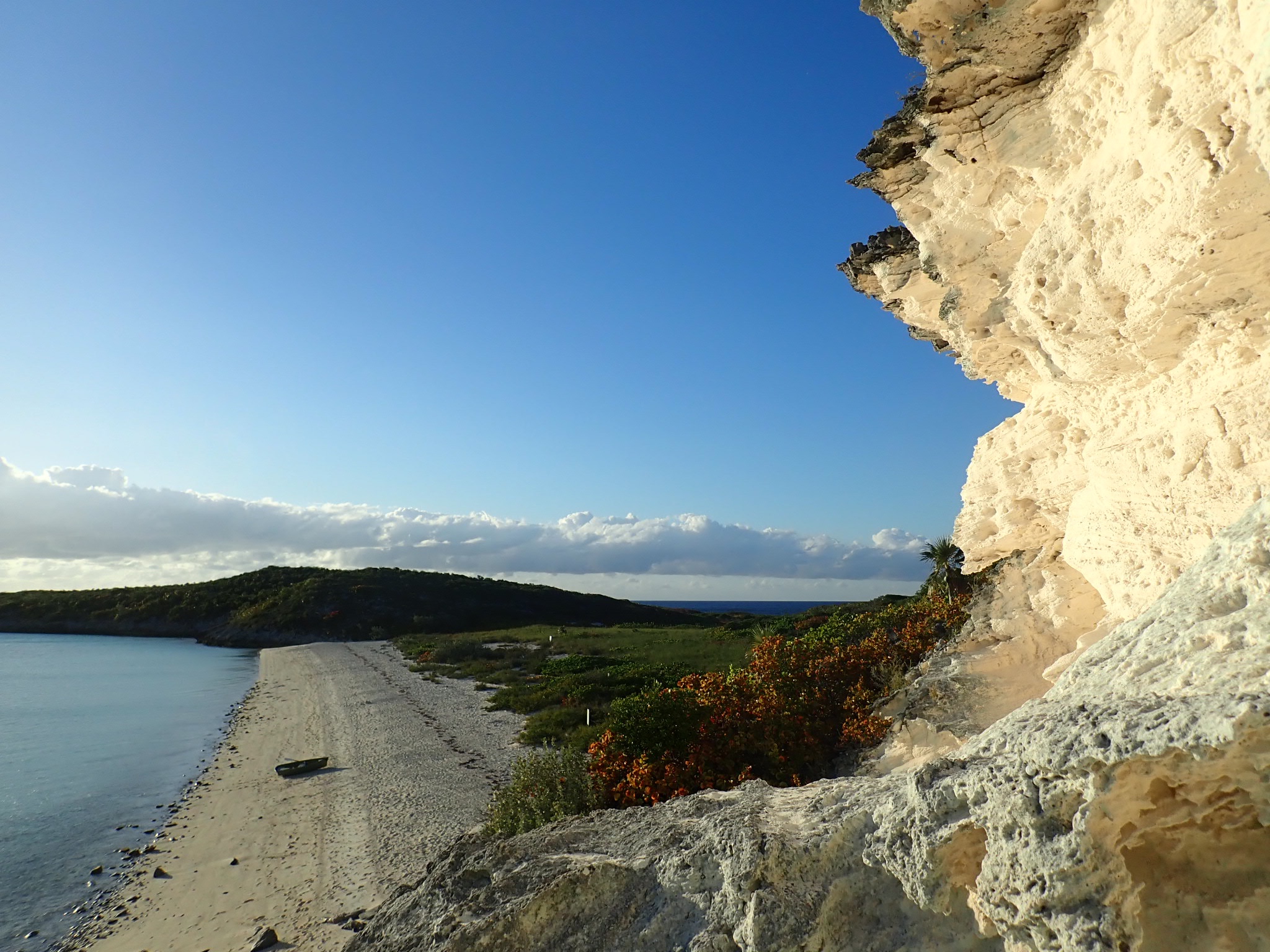

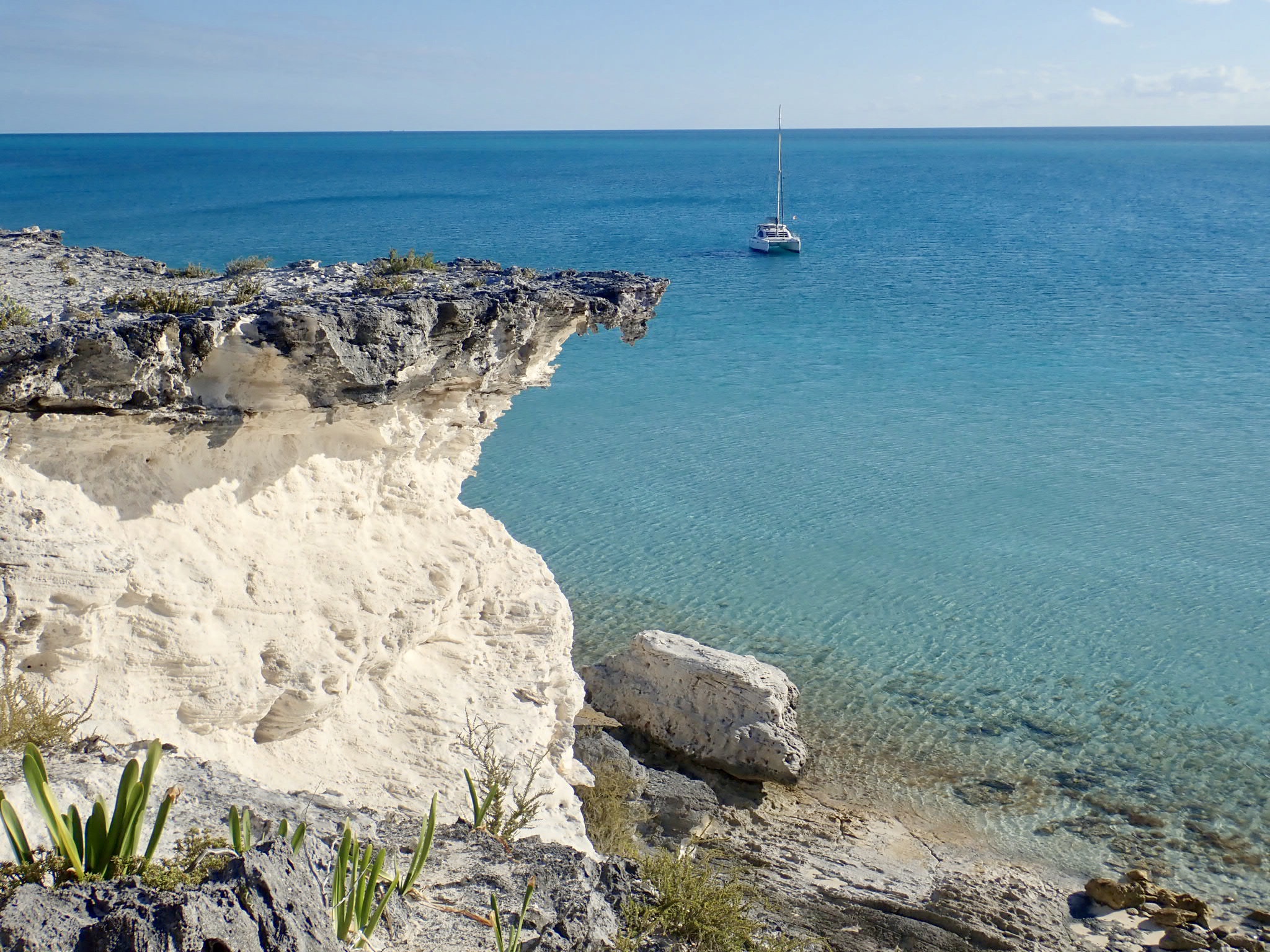
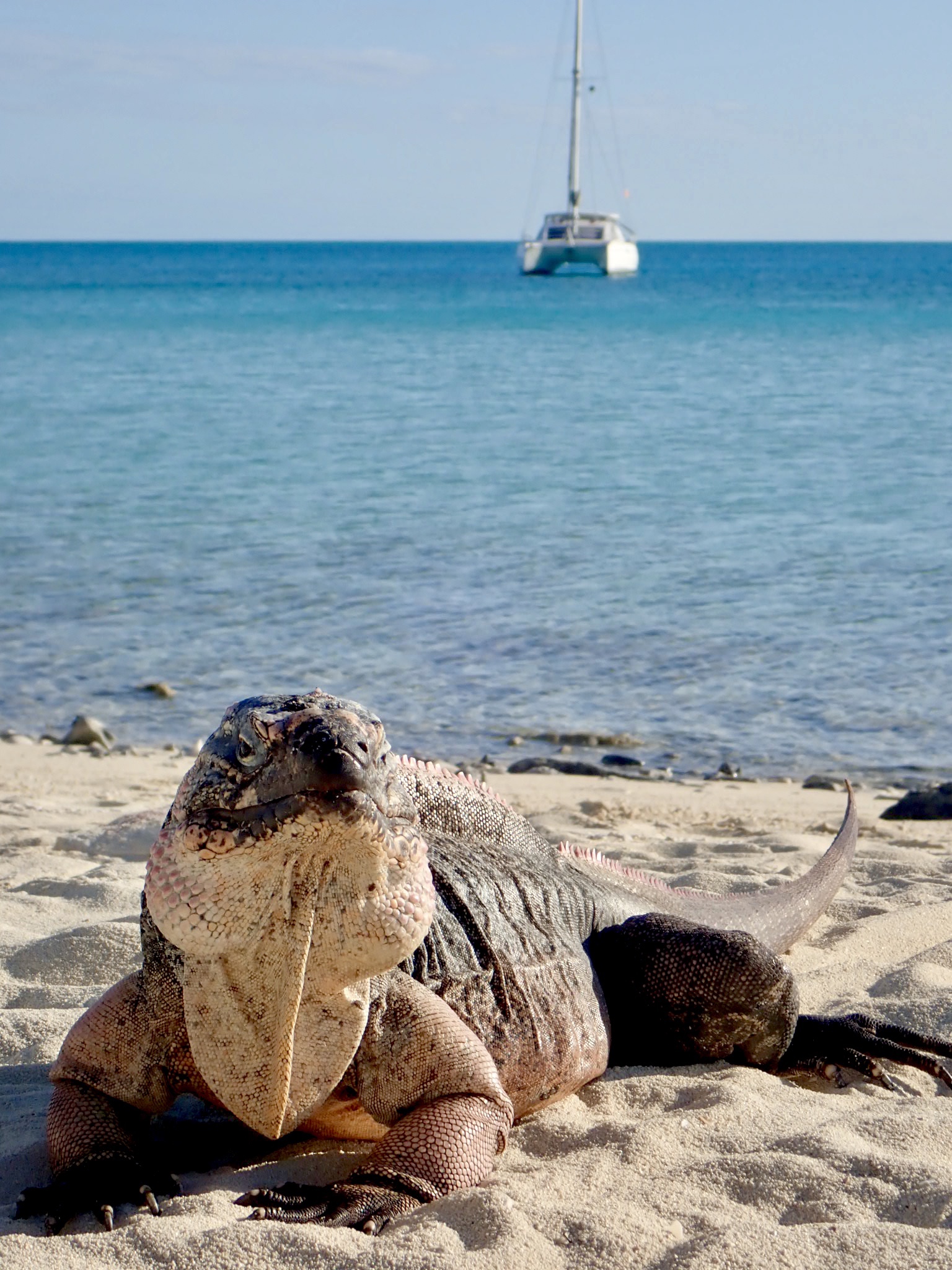
The most famous inhabitants of this unique little cay are the endangered Iguanas. They are not shy, and are the primary reason most visitors come to the island. The vast majority of whom only hop of their tour boat long enough to photograph the iguanas before roaring off to the next attraction in boats sporting 900 to 1400 hp of giant outboard engines. But for at least the next 7 days they will not coming here as all tours are suspended.
As you walk down the beach they will come out from the shade of the stunted vegetation to check you out. Some are young, only 0.3-0.5 meters nose to tip of tail; others are up to 1.3 meters and very impressive. Their long clawed toes, pink chests, piercing eyes and spike like manes along their backs give them a prehistoric and unfriendly appearance. However, unless you taunt them, which you should not, they are just curious…like me. As I crossed the narrow island on a grass lined sandy trail I was delayed on multiple occasions by Bitter Iguana Cay traffic jams…waiting for the iguana to move on!
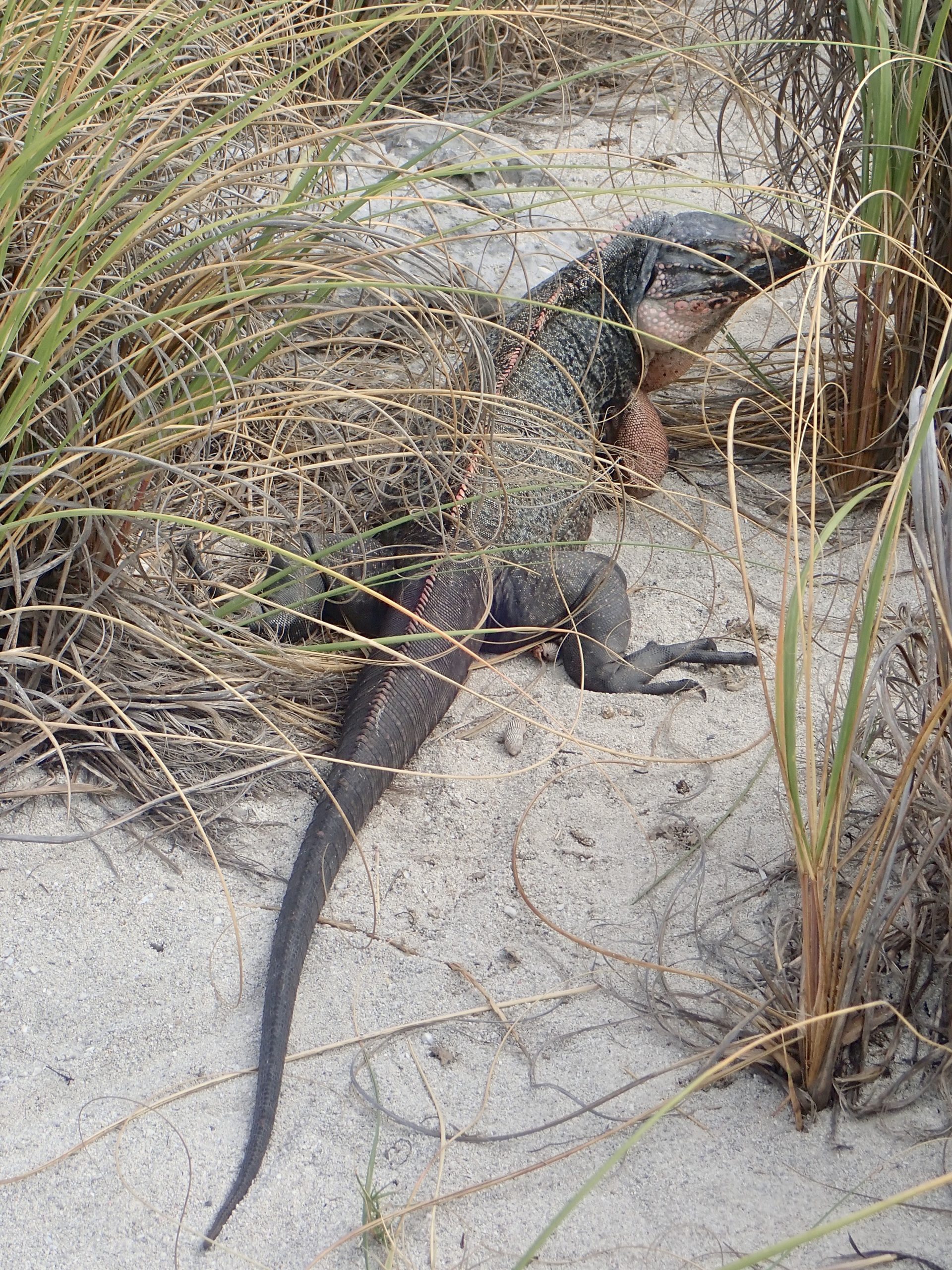
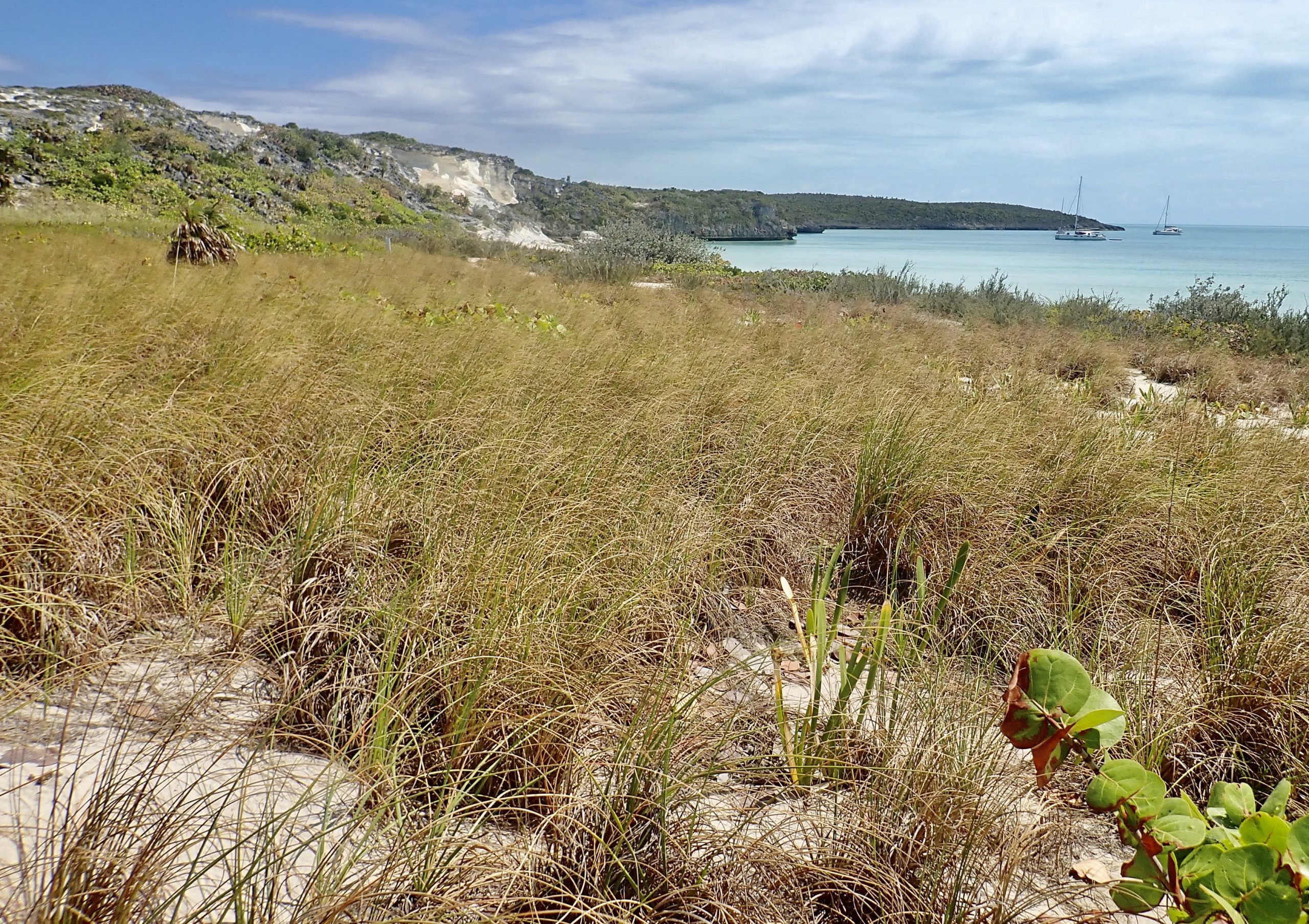
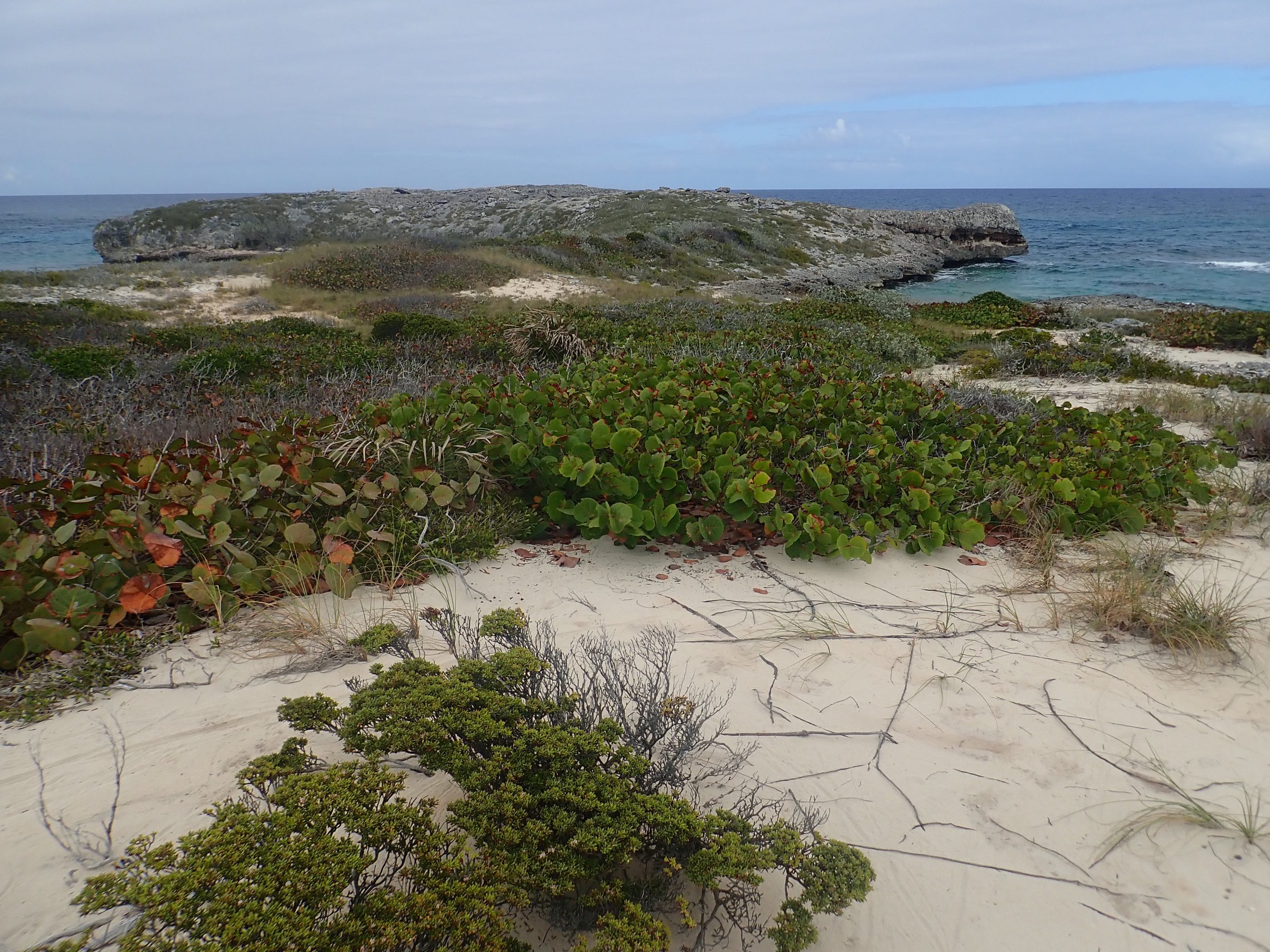
The eastern or windward side of the island is entirely different to the bank side. The relentless pounding and erosional forces of the Atlantic swell and wind driven waves are eating away at these islands.

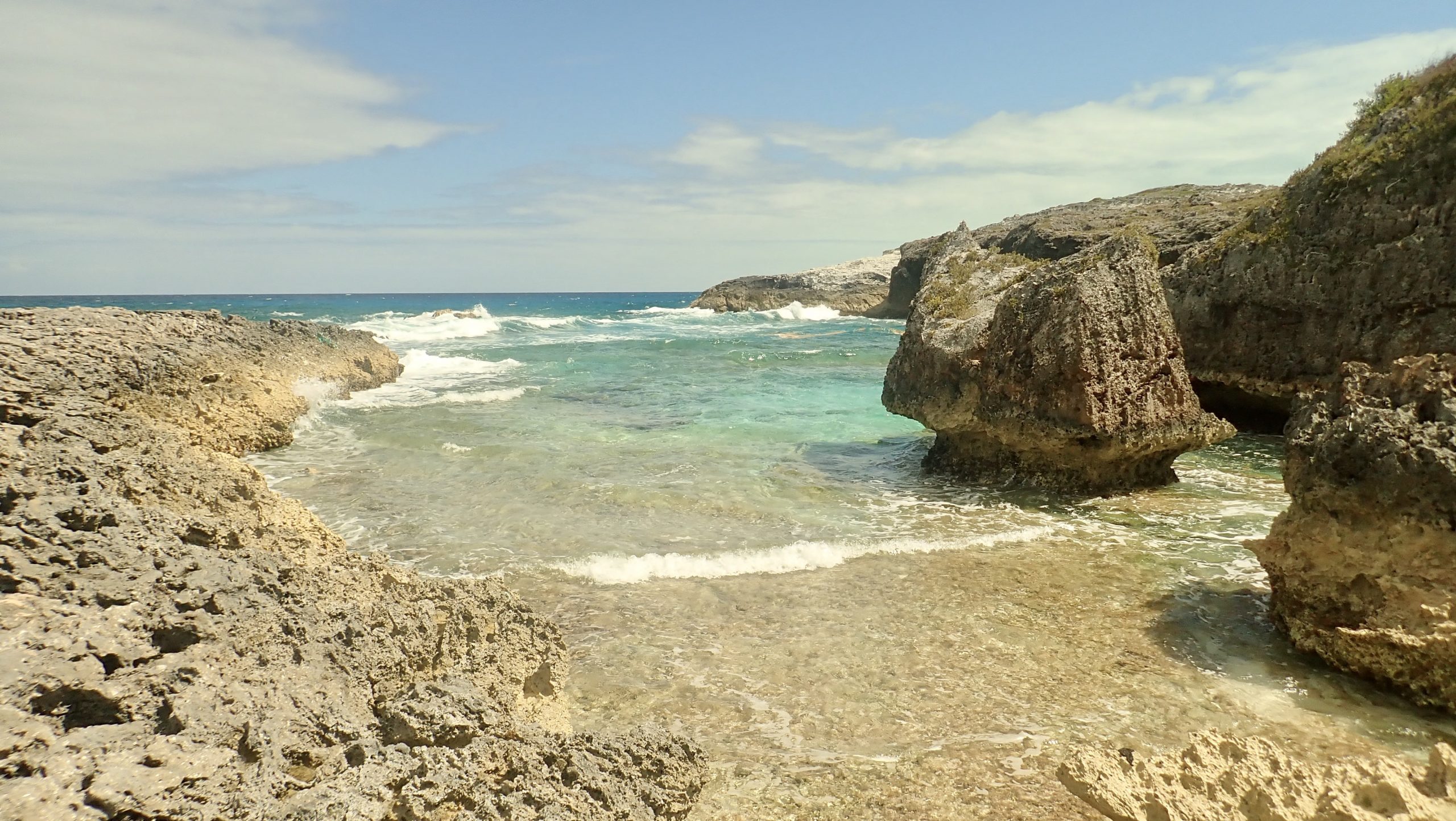
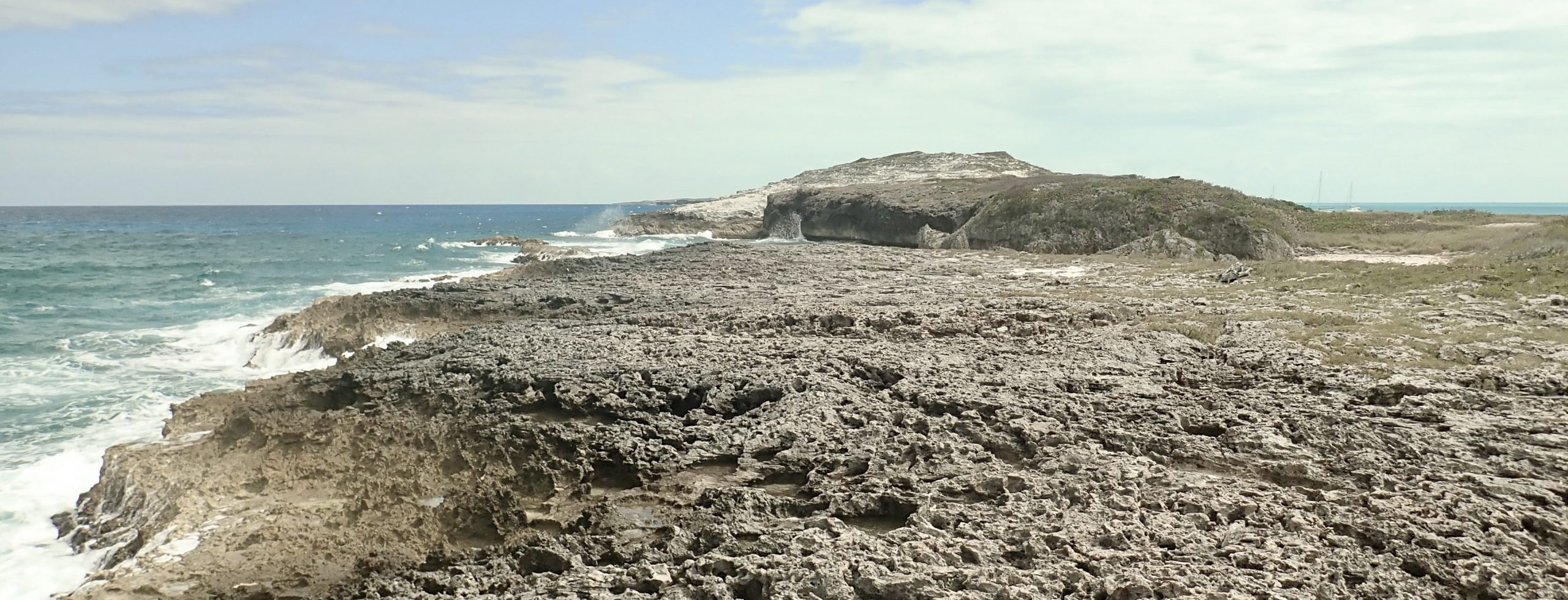
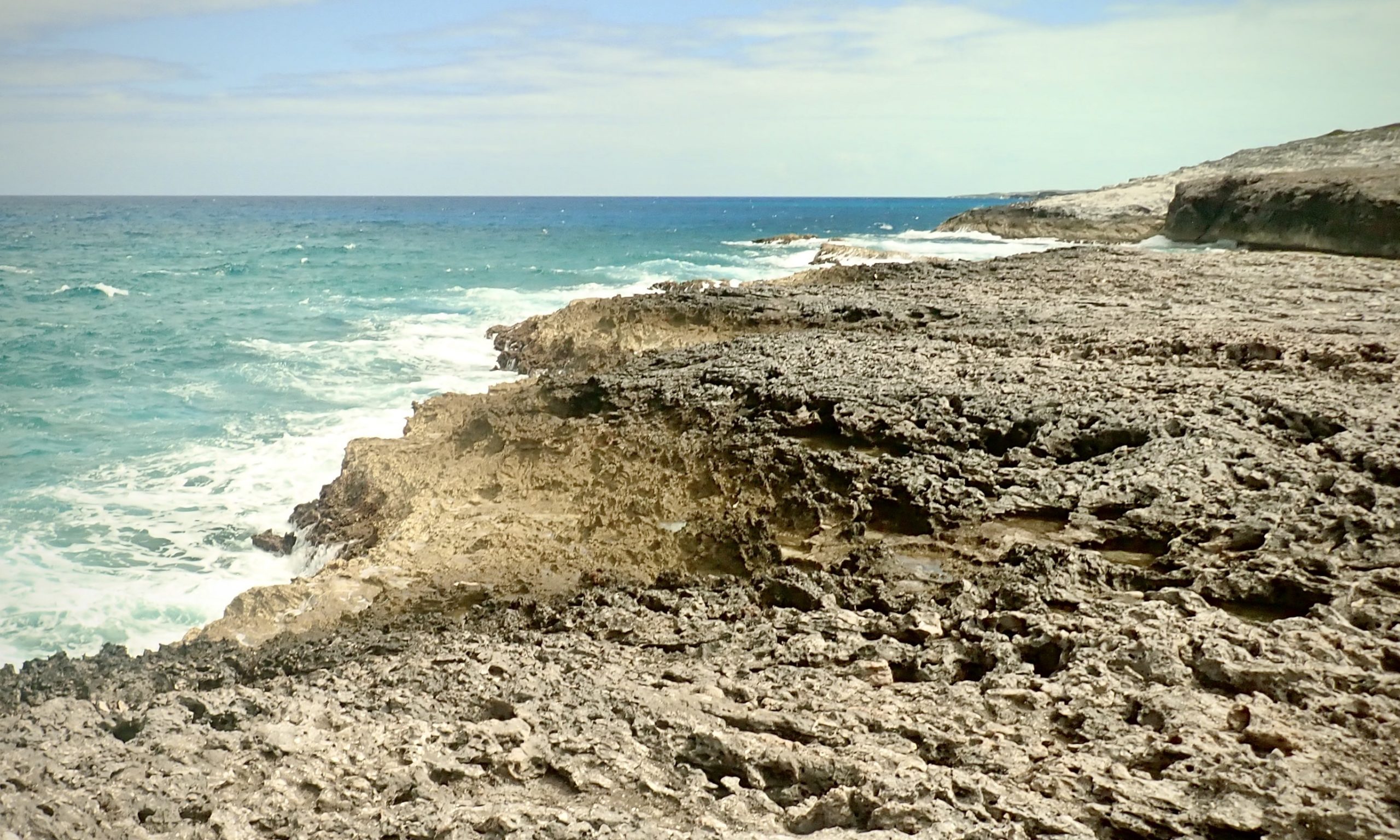
Running aground or being driven in a storm against these sharp rocks and overhanging cliffs would likely be fatal. Even on a calm day the swell crashes against the jagged rocks sending spray high in the air. The surface above the cliffs is rugged with sharp rock edges and potholes. Waves breaking and pounding under the overhanging cliffs make a thud like sound that is just as quickly amplified or smothered. Where there is no overhang they crash with a gushing rush of white water and exploding spray. It is all very dynamic and almost mesmerizing to watch.
My goal was to get to the north end of the island to see the narrow channel that I had navigated through as I entered the Exumas from the sound 2 weeks earlier. It was 2 in the morning and there was a flooding tide with 20-28 knot winds and 1.5-2 m swell pounding against the rocks that night. My entrance was timed so that at least all the water, swell, waves and wind were going in the same direction. But it was very rough and Oh! was tossed about like a cork as she transited the narrow channel between the cays. With partially overcast skies, it was dark, but not so dark that the waves crashing over the rock on the south side of the channel and the windward edges of the low flat islet on the north side were not visible. At least they gave a foaming white warning of where Oh! and I did not want to go. It was one of those pucker up the sphincter muscles “moments” I won’t soon forget. If It had been daylight, I am not sure I would have had the confidence to go through. Today, although it is very calm in the sound, there are still waves dancing and breaking as the tidal current rush’s through the channel.

However, once through the few hundred meters of the constricted channel, everything smoothed out quickly. Just 30 minutes later I was anchored behind the protection of Bitter Iguanas cliffs. It was a a wonderful feeling to crawl into bed that night and know I could sleep as long as I wanted after a 7 day solo passage from the US Virgin Islands.
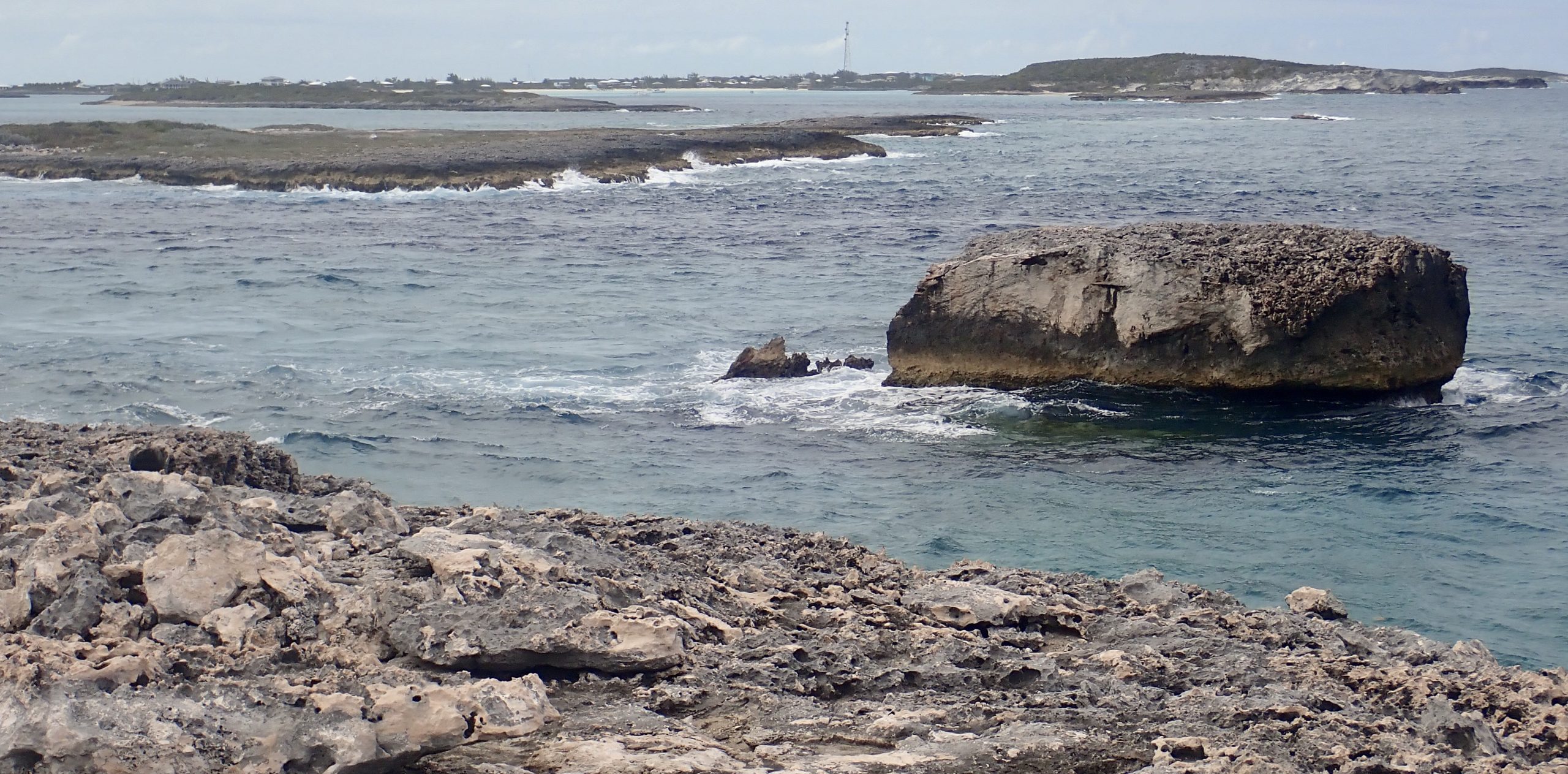
Bitter Iguana is a very special place. Especially if you take time to explore this almost pristine little gem that is overlooked by so many…which suites me just fine.
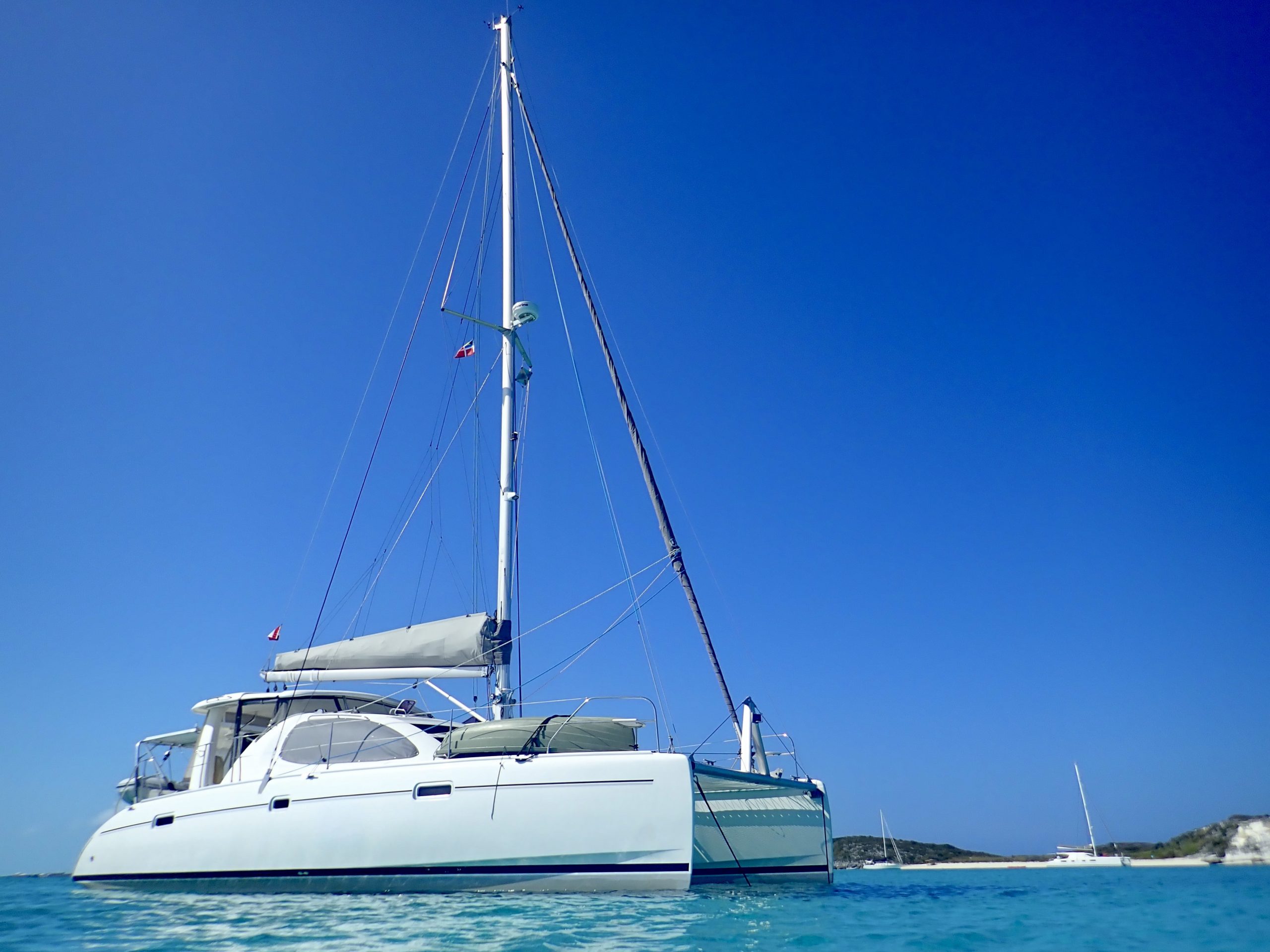
Cheers from Oh!
Sitting out the Bahamas mandated Covid19 curfew, “in paradise”.
